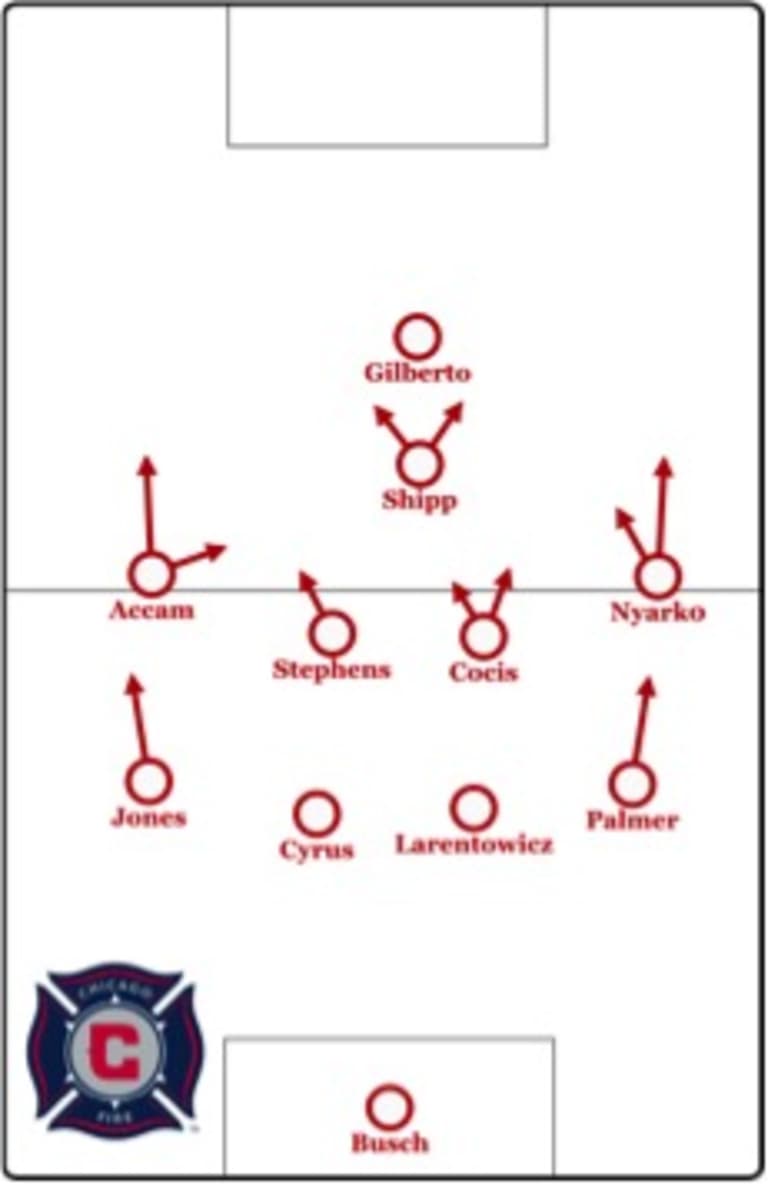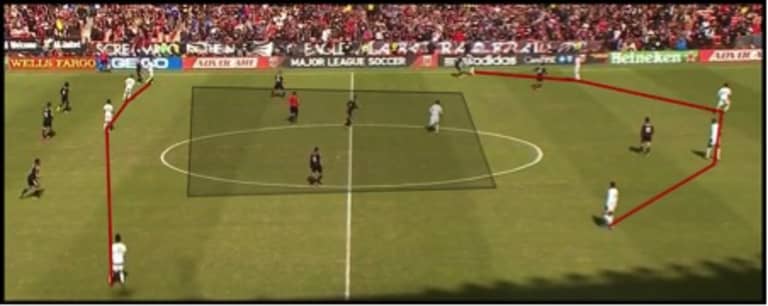Jesse Marsch’s Red Bulls have their fate in their own hands as they head into Decision Day at the top of the Eastern Conference with a chance of winning the Supporters’ Shield. The circumstances have been well documented; if RBNY win, the shield is surely to be theirs on a superior goal difference.
Standing in their way is a Chicago Fire team who sit at the bottom of the table with nothing to play for. This does not mean for an easy game by any means however - a look at the differences between their home and away records show this will be no walkover either. When away from home, Chicago has not won a single game - losing 12 and drawing 5. At the Toyota Park however, they have won 8, lost 7 and drawn 1

In their last game, Chicago fell well short of a dominant DC United in a 4-0 loss where they struggled throughout.
Lining up in a 4-4-1-1 formation, the side took a wing-oriented possession game which lacked any threat as they struggled to create from wide positions. Without the ball, they pressed with frequent instability and access.
In defence, the 4-4-1-1 would convert towards more of a flat 4-4-2 as Shipp would support Gilberto as they looked to press higher up the pitch.
With possession, the structure became quite aggressive in a nothing-to-lose manner. Both Nyarko and Accam took-on higher positions with the Shipp-Gilberto duo which gave themselves more issues than benefits.
Uncompact Pressing
One of Chicago’s key defensive issues throughout the match was their lack of compactness in pressing.
In a tactical theory article for Spielverlagerung, I note that there are multiple types of compactness – the three main ones being horizontal, vertical and spatial. The first two are fairly self-explanatory, horizontal being the distance between the most-left and the most-right players and vertical being between the highest and the deepest players. Spatial compactness is a much less talked-about concept and defines the level of compactness within a block.

Although spatial compactness can be supported heavily by having good levels both horizontally and vertically, a team can have relatively short distances horizontally and vertically yet have large open gaps due to poor spacing, thus lacking the spatial compactness within the block.
When Chicago looked to press high up the pitch against DC, they struggled on all three types of compactness though the one which really caused instability was their lack of spatial compactness.

In examples such as the scene below, Chicago have made a very uncoordinated press against the touchline which results in massive spaces being open within the block. Perhaps one of the most worrying aspects of this particular moment is the ball position.
To press a team when the ball is near the touchline is one of the easiest moments to press. It is significantly less difficult than when the ball is in a central or half-space position due to the presence of the touchline. This immediately cuts of 180’ of playing space and with that, they lose out on options for passing, movement and thus predictability increases. However above, Chicago have still struggled to form an effective press as they still leave large spaces open in the middle.

Similar features can be seen in this example, as DC have had the ball on the wing yet have been able to easily pass inside against an ineffective press. By having an uncoordinated and uncompact press, it is clear to see the space inside which has opened up. This is particularly worrying for Chicago as the space which is open due to the lack of compactness is much more valuable from a strategical perspective as opposed to the original wing position.
In these two cases particularly, there is a telling lack of horizontal spacing as the marked players are on very similar positions horizontally, especially in the first where there is a straight line of 6 players in the press.

Finally we have one more example of this poor pressing. In this case, it is more beneficial to concentrate on the lack of vertical compactness as to why it has failed. Highlighted on the diagram, we can see massive spaces between the lines of Chicago players which is ultimately their downfall in this play. Not only does this make the press vulnerable if beaten, but it makes it more ineffective in execution as the main presser has little support from the midfielders who are all too far away to help.
The DC defender can simply play a sharp pass towards the yellow space, where a lay-off by the receiver allows them to bypass the midfield and directly attack the defensive line.
This weakness in Chicago’s defensive organisation will be something which the Red Bulls will be looking to take full advantage of. With the vertically-oriented style which Marsch has introduced in his first season at the Red Bull Arena, his side attack very quickly after breaking through the lines. Through this, they are well-equipped to take on a disjointed Chicago press and take advantage of the large spaces they give up in the centre of their shape.
In my analysis of the match against Philadelphia, I showed how Felipe and McCarty worked well to penetrate the defensive block through their passing. This could well be prevalent again as they could potentially have more space to work with, whilst we it is highly possible to see the similar combinations between the front 4.
Disconnected Attack
Chicago also suffers from what is seemingly a bit of a trend across MLS. When building up from defence, their positional structure means that the players are often disconnected and thus they struggle to make short passes.

As you can see in the scene above, the distances between Chicago’s defensive line and their attack are big with just one midfielder in between. As a result, they cannot make a short build-up through the pitch and must make a less-accurate long ball.
The Red Bulls have become a prolific pressing unit under Marsch and they should be looking to take full advantage of this issue in Chicago’s pressing game. If they can isolate the ball and remove any support from a disconnected Chicago system they can create potential to regain possession in advanced positions. Against a disconnected shape, these breaks can carry even greater threat as Chicago would be left even more open without any support from the stretched-out midfield as exemplified above.
Counters Could be Key
Once Chicago conceded the first goal, their game opened up considerably as they went in search of an equaliser. Upon the turnover they were frequently open to counter-attacks from DC after having sent a lot of men forward in the previous attack.

If the Red Bulls manage to find an early goal in the game tonight – and it’s not like that was an issue last game - then they could look towards counter attacks to inflict further damage on a bottom-of-the-league Chicago side.
The system in attack is well-suited to taking advantage of the counter-attacks. Based on getting forward with great pace, the likes of Lloyd Sam and Mike Grella have proven to work brilliantly when breaking forward in an up-tempo manner. Although it is likely that the Red Bulls will be looking to start their breaks from higher positions than DC did, the effect is still the same.
There was a lot to take from Chicago’s performance at DC and it will be interesting to see what Marsch takes into the game tonight. If the opposition press with the open shape which they showed against DC, then the Red Bulls will be definitely hoping to take full advantage with the quick attacks of the front 4. The side are finishing the season strongly and look good to make a first victory of the season against Chicago and with it, take the Supporters’ Shield.


